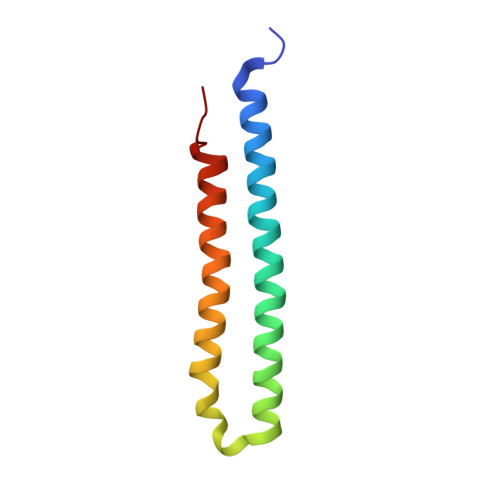Structure of the mycobacterial ATP synthase Fo rotor ring in complex with the anti-TB drug bedaquiline.
Preiss, L., Langer, J.D., Yildiz, O., Eckhardt-Strelau, L., Guillemont, J.E., Koul, A., Meier, T.(2015) Sci Adv 1: e1500106-e1500106
- PubMed: 26601184
- DOI: https://doi.org/10.1126/sciadv.1500106
- Primary Citation of Related Structures:
4V1F, 4V1G - PubMed Abstract:
Multidrug-resistant tuberculosis (MDR-TB) is more prevalent today than at any other time in human history. Bedaquiline (BDQ), a novel Mycobacterium-specific adenosine triphosphate (ATP) synthase inhibitor, is the first drug in the last 40 years to be approved for the treatment of MDR-TB. This bactericidal compound targets the membrane-embedded rotor (c-ring) of the mycobacterial ATP synthase, a key metabolic enzyme required for ATP generation. We report the x-ray crystal structures of a mycobacterial c9 ring without and with BDQ bound at 1.55- and 1.7-Å resolution, respectively. The structures and supporting functional assays reveal how BDQ specifically interacts with the rotor ring via numerous interactions and thereby completely covers the c-ring's ion-binding sites. This prevents the rotor ring from acting as an ion shuttle and stalls ATP synthase operation. The structures explain how diarylquinoline chemicals specifically inhibit the mycobacterial ATP synthase and thus enable structure-based drug design of next-generation ATP synthase inhibitors against Mycobacterium tuberculosis and other bacterial pathogens.
Organizational Affiliation:
Department of Structural Biology, Max Planck Institute of Biophysics, Max-von-Laue-Straße 3, 60438 Frankfurt am Main, Germany.
















